📅 Posted 2018-08-29
Ah, the humble little disc in a hard shell known as a MiniDisc. It’s a little hard to believe how old the format really is! Today’s blog comes to you with kind support from ATRAC and the magneto optical community. Yes, it’s the world of MD.
A history lesson
Today’s blog will focus on the period I know best: late 1990’s until more recently. But first…
Sony worked to develop the MiniDisc technology as a competitor to Panasonic’s Digital Compact Cassette (DCC) and Sony’s own Digital Audio Tape (DAT). DAT ended up being used more in professional markets and DCC, well, I’ve certainly never seen that anywhere. Actually I remember seeing a DAT tape player featuring prominently in episodes of Neon Genesis: Evangelion. So I probably wanted one at the time, but that’s history.
DAT player in Neon Genesis: EvangelionOh, while I’m at it, the MD features in The Matrix, albeit briefly:
MD as sort-of featured in The MatrixThe first MiniDisc device was released in 1992 and it was known as the MZ-1. It was a bulky device plastered with buttons and about as thick as a stack of 5 MDs. The battery technology back in the early 90’s was NiCad and it would run flat after an hour: only enough to record 1 60 minute disc, let alone 74 or 80 minute discs which were released at a later date.
The Sony MZ-1Many different companies released devices over the years, including Aiwa, Denon, Fisher, Goldstar, JVC, Kenwood, Panasonic, Pioneer, Sanyo, Sharp and of course Sony.
Devices were made for many purposes, including:
- portables
- rack-mount pro equipment for studios and radio stations
- decks for home
- mini systems, combined with CD players, tape decks, radios and amps
- cars
- boomboxes
- data drives, to be connected to a PC
Some of the crazier devices included:
- A vending machine to download new tracks to discs at high speed (8x) similar to the Famicom Disk System Kiosk (only in Japan of course)
- A continuous recorder for courtroom testimonies
The last recorder ever made was the Sony MZ-RH1 in mid-2006, which featured:
- OLED display on the main device
- LiIon battery
- Can use discs as USB storage
- All the latest codec formats, ranging from standard MD ATRAC all the way up to lossless PCM recording
- Uploading of recorded tracks back to the PC
I don’t own one myself, but I regularly see them going for $700+. The batteries alone go for $100+. I guess this is a problem when the device can’t accept an external battery pack, so the batteries are going to become quite rare.
How it works (in simple terms)
In the photo above of the disc, the slightly darker underside is shown on the left. This is the “magnetic” side. The top side is shown on the right. This is the “optical” side.
To quote Wikipedia:
Recordable MiniDiscs use a magneto-optical system to record data. A laser heats one side of the disc, making the material in the disc susceptible to a magnetic field. A magnetic head on the other side of the disc alters the heated area, recording the data onto the disk. Playback is accomplished with the laser alone.
I find this particularly ingenious: the laser can make sure the data is only altered when a small area of the disc is heated. The magnetic head can apply the appropriate magnetic charge at this point. It then cools and the disc is safely written. Playback, being purely optical, feels like the most efficient way to read masses of information off a flat disc surface.
That’s a very basic description of how to get data onto and off the disc, but this is also combined with ATRAC (Adaptive Transform Acoustic Coding - what a mouthfull) which is a way of compressing audio data down so that a full CD of music can fit onto one MD. It’s quite complicated (and I won’t attempt to explain how) but has a similar aim to an MP3 file, only a lot more energy efficient. The relatively long battery life of a MiniDisc system is evidence of this. There are far more technical differences between ATRAC and MP3, but we’ll leave that for another blog.
My story
Obligatory stack of MDs on a radio mixing panel, at Eastside RadioDuring highschool, some of my friends had portable MiniDisc recorders. I was able to share them on the occasional bus excursion (one earbud each… say yes hygiene!) but I never had the funds to afford one myself. MDs were certainly out of the reach of the average high school student!
Apple’s first generation iPod was released in 2001 and the world started to get quite excited about portable MP3 players. The MiniDisc was still there, the little battler all the way along, but it needed a few upgrades. Sony released the “NetMD” (more on that later) and I was finally able to pick up one for myself.
I had to travel a lot for uni (about 2 hours each way via train + car) and the MiniDisc was an unbeatable device to pass the time. I did have a casual job at the time but it was the random scholarship that my course had which actually funded the purchase of my first portable MiniDisc recorder. Apparently the scholarship was designed to be used to bootstrap some sort of “innovation” and (I suppose) start your own business, but we all spent it on toys. The innovative startup business idea would have to wait.
Why it works really well
1. Insane battery life
When new, the internal NiMH battery on a 2001 Sony MZ-N1 will play music for 30 hours according to Sony. Although real-world performance rarely lives up to the claims, for simplicity sake let’s go with assuming this is correct. Change over to a garden-variety AA battery and you’ll get 45 hours of music playback. Combine both to get 79 hours. This is insane for a device which has a motor which spins a disk up and down continuously.
An Apple iPod couldn’t even get close to this until 2006. Of course. the iPod would probably have a lot more storage, but you’d expect some progress in 5 years!
These days, after the NiMH battery has long worn out, AA batteries work just fine. I still use my MZ-N1 with AA’s and I’ve gone on holidays for weeks and only used 1 battery charge. I’ve brought extra batteries but never had to use them.
2. Expandability with more discs
In the early days, memory was extremely limited and comparatively quite expensive. Unless you were going to forgo the awfulness of compact cassettes, MD changed this because you could have quite a collection of discs at your disposal without having to worry about having enough different things to listen to. If you didn’t like something, you could easily format the disc and start again.
I’ve even found, on the odd occasion, old MDs in bins and ‘saved’ them, formatted them, and put them back into good service. This is part MD-obsession and part War on Waste, if you will.
3. Did I mention the discs?
They are tough and long-lasting. I’ve only had 1 decide to give me “READERR” on the display - and that was a 2nd-hand disc bought on eBay. Dropping them on the floor triggers no fear. It’s a different story for the portable devices however!
The little shutter does tend to keep most gremlins out but sometimes they do require cleaning. The stickers and the act of writing the labels with pencil (so you can erase them at a later date) feels somehow old world charm. I’ve seen some collections where people will duplicate the original album art and affix it to the disc, but that seems a little too much effort for me. Peeling the ever-so-tiny stickers and making sure you don’t smudge the pencil as you stick them onto the narrow edge of the disc is somewhat pleasing, despite requiring fine dexterity.
4. Portable field recorder
Taking a portable MD recorder on the road and out in the field for recording duties is quite a pleasure. The ability to create lots of tracks, name them, enable mono for double capacity and use microphones with “plug-in power” pre-amps are all nice things.
Actually plug-in power. What is that? It seems to be forgotten tech but basically the small pre-amp in the microphone can be powered like ‘phantom’ power from the recording device. This negates the need to have a small battery in the microphone itself. A nice touch and ensures you can have less specific battery requirements combined with a cleaner pre-amp’ed output from the microphone.
5. Tapes were always rubbish
I always thought they sound a bit odd. Maybe there were good tape recorders and players out there, but I certainly never experienced one. Combine that with:
- Having to rewind the tape
- You can’t easily repeat a track
- You can’t easily shuffle the tracks (although my friend had a solution to this: record an album the correct way on one side of the tape, then record it shuffled on the other side)
- They always jammed, necessitating a twist of a pen in the sprocket
- The battery life sucked
- … I could go on.
Maybe, just maybe Metal or CrO2 tapes could edge closer to a nice recording, but it all seems a bit difficult to match up the tape type with the correct Dolby mode on the player.
6. Giving things titles
Although labourious on the portable device itself, naming all discs and tracks was a really neat feature. This is something that never quite took off with CDs: I guess the standards never quite got there.
Acquire an MD deck with a PS/2 keyboard port and you were suddenly in track naming nirvana. You could even control recording and playback using the keys on the keyboard, which is quite interesting. Another alternative is a NetMD with USB cable, which is probably the ultimate naming solution. It’s nice to have options.
7. Splitting, combining and that mysterious T-Mark button
The in-built track editing features were tricky but powerful. You could easily split tracks, re-arrange, join back together and delete bits on the device itself.
Oh and that T-Mark button on the side: it was a boon for recording: tap it for a new track (if a 3 second silence gap wasn’t detected). It was odd UX because no other button looked like it and it was all alone on the side of the recorder, with a mysterious label.
8. Portable recorders are just gorgeous (well, most of them anyway)
Apart from some odd design choices (similar to some earlier outrageous Nokia phone designs), the portables are pretty damn sexy.
Here’s my MZ-N1 from 2002:
Sony MZ-N1The miniaturisation is quite amazing: so much is packed into a tiny device and clad with a magnesium alloy exterior. Wait, is this an Apple product? No, it was never that successful, mainly because…
Why I think Sony killed the MD (without actually trying)
The complete and utter obsession with DRM and copy protection was way too heavy handed. MD would always be an inferior copy of a CD - after all, it is lossy encoding with a bitrate of 292kbit at best. It certainly got better over time with more efficient encoders (which were still compatible with the original players provided you didn’t use LP modes or HiMD discs) and we even got a lossless format later on. But the damage was done. It was just too restrictive in pursuit of protecting the copyright of the recording companies. Napster sure made a mockery of that. The rest is history.
OpenMG was pitiful software. It was intended to bridge the gap between MP3 and MD by allowing for simple transcoding and uploading to MDs using a PC at greater than realtime speeds. All of a sudden your giant CD library could be swiftly converted to take on the road. Or so we thought. Apart from having to have alignment in the moons and planets to make it work (it was pretty buggy), the usability of the software made no sense and it locked tracks on your discs, which meant you had to use OpenMG to clear a disc. Stuck in a remote location without a computer with OpenMG? That disc was useless if you wanted to delete a track or wipe the disc. Limiting exporting of songs to 3 goes was an incredibly futile tradeoff between usefulness and copyright protection.
The invention of “longplay” modes LP2 and LP4 allowed for squeezing a lot more music on a disc, at reduced perceived quality. LP2 wasn’t too bad but LP4 was a bit like a 64kbit MP3: fairly awful for music. Wasting precious kilobits to keep backwards compatibility by ensuring older pre-longplay players would play silence seems like a terrible idea when every bit counts. I would’ve rather have Sony ditch “compatibility” (if you can even call silent playback “compatibility”) and save a few more extra bits for improving quality. Maybe LP4 would’ve been more useful? Maybe have an option for compatibility?
Recording studios also diluted the market with real releases on MDs. I’m not really sure who bought these, but basically you could either buy the CD version (and use it everywhere) or the MD version (and only use it on MD players). You couldn’t reuse the discs if you didn’t end up liking the album and the amount of types of music released on MD was quite limited, so what was the point?
In some ways Sony didn’t learn and proceeded to release other devices with similar-but-not-quite-the-same discs, such as the PSP and the UMD. You could even buy Sony movies on UMD format, which were often more expensive than the DVD version and could only be played on a PSP. It’s like they never learn.
“NetMD”
Sony MZ-N1 with NetMD vs Sony MZ-R91 without NetMDTransferring MP3s over USB to MP3 players in the early 2000’s was an essential feature. The first iPod required you to have a Mac and (if I’m remembering correctly) also use Firewire (which is long forgotten). To catch up, Sony released NetMD which allowed USB transfer of MP3s and CDs onto MiniDisc. Convenient, but quite flawed. It also didn’t allow upload from recorded disks back to the PC: this would’ve been a seriously useful feature.
A saving grace was the SonicStage Simple Burner application. Combine this with a set of songs authored into an ISO CD image, a “virtual” CD drive, you could basically use a loophole which meant unlimited transfers AND no limit (TrProtect) messages on the recorder device itself. Convoluted, but probably better than doing a real-time recording onto MD.
I have a theory on how to wipe discs which are “TrProtect”-ed, but it involves disconnecting the magnetic head so the device thinks it’s recording the TOC correctly when it isn’t recording anything at all. I should investigate this further (combining this with a guide on how to repair the fated cable that connects the magnetic head on an MZ-N1).
These days, the latest version of SonicStage combined with a Windows 7 32bit virtual machine means you can still use the software with some USB sharing trickery. Possible, but a bit of effort. Don’t expect any new drivers and certainly nothing for 64bit versions of Windows. Macs? Linux? No way.
Then there was Hi-MD
Not sure why Sony even bothered with Hi-MD to be honest. The capacity of the MiniDisc technology at 80 minutes per disc was probably a bit limiting by the time the 2000’s were getting along. Sony fixed this by releasing a Hi-MD version with up to 1GB of data per disk, with a lot of other features such as choice of audio format and the ability to copy large files onto the disks in a ‘data’ kind of mode.
This never really took off, in what had become a crowded market and even mobile phones were getting in on the personal audio market.
These days, Hi-MD discs go for $50 a piece online and they are quite collectible, along with the players & recorders also being quite collectible.
Today
Today, MiniDisc doesn’t play much of a role of course. There are still plenty of hardware (and discs!) available online for sale. Just recently, someone noticed a whole pile was dumped on the side of the road and posted it on Facebook. As the discs go for $5 each on eBay, this pile of unwanted gold was snapped up immediately! Alas, I missed out on that one.
Have you seen any MDs in the wild lately?
Looking for more info? Check out the Minidisc Community Portal.
Like this post? Subscribe to my RSS Feed or


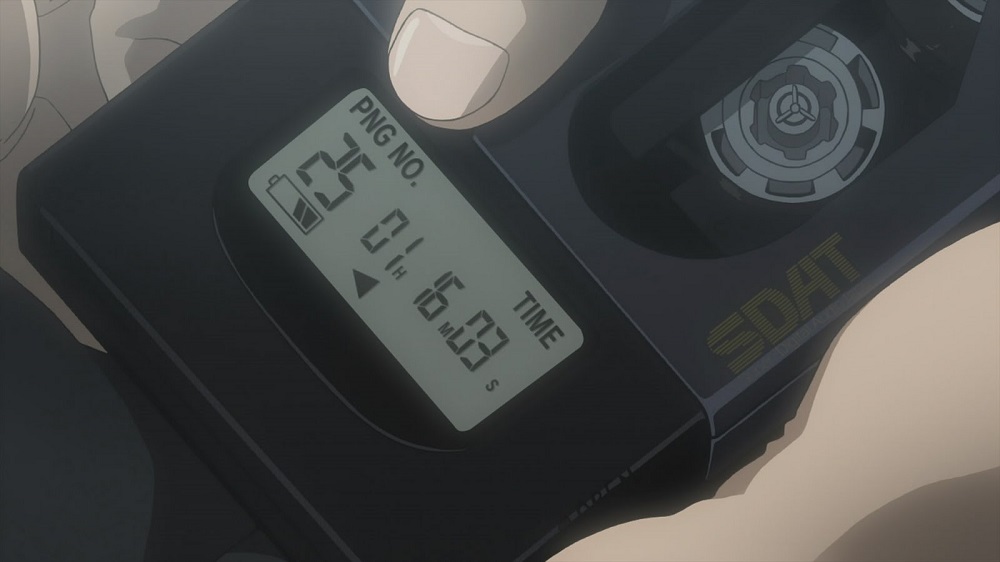
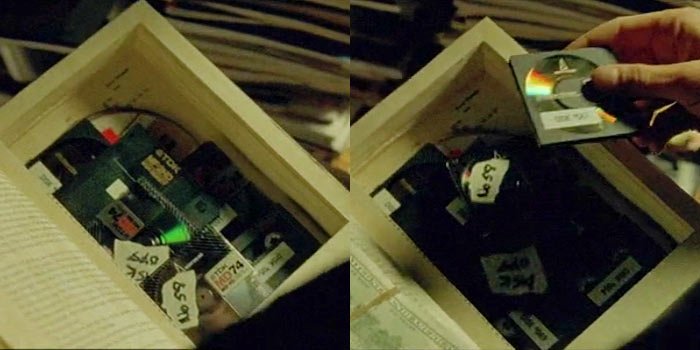
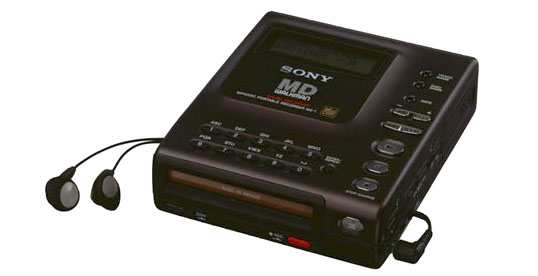

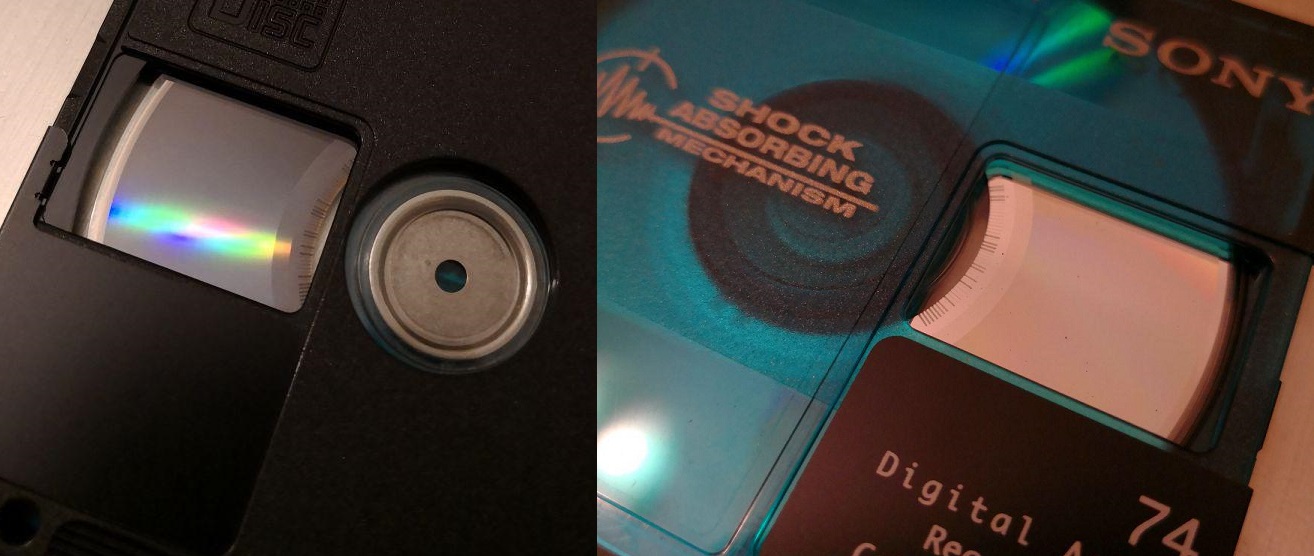
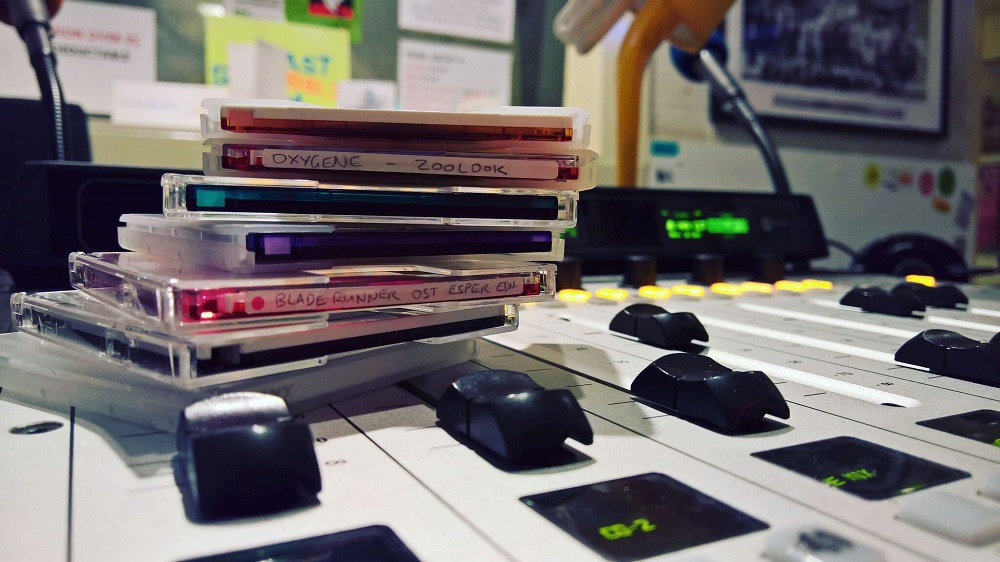


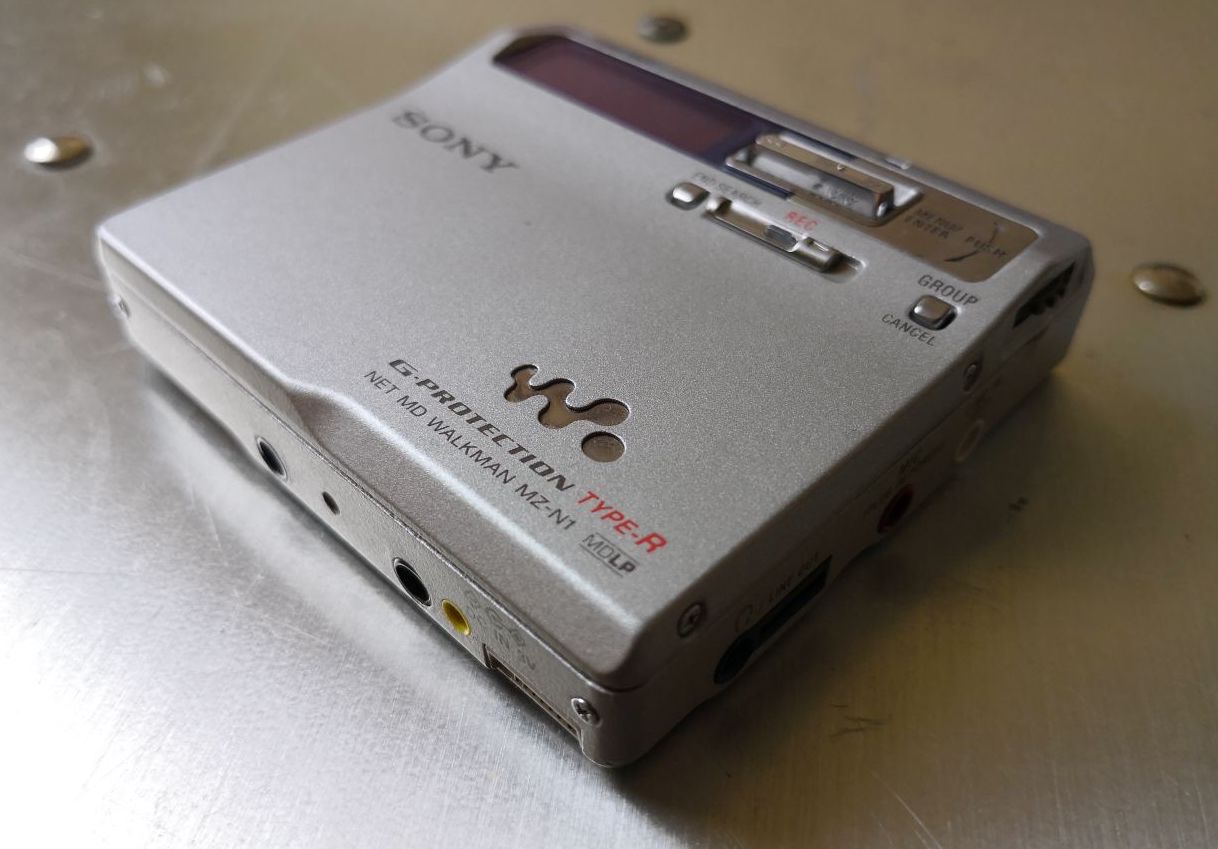
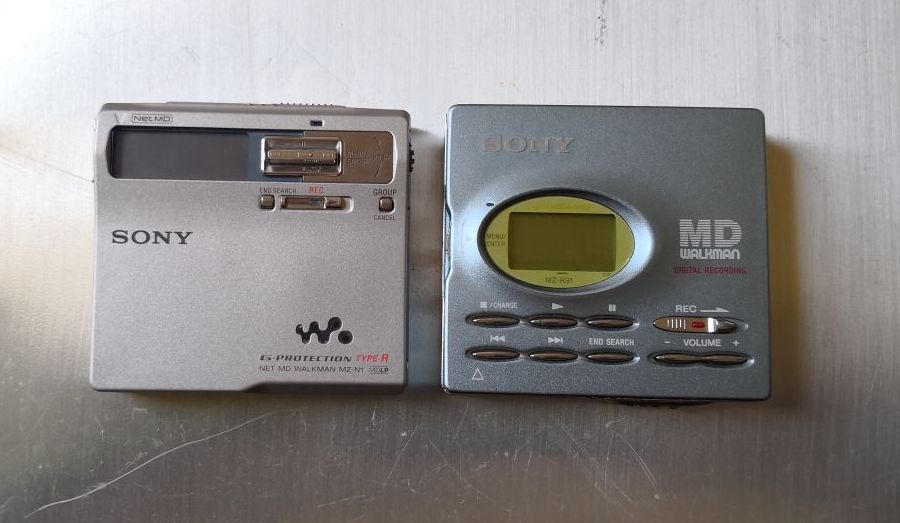
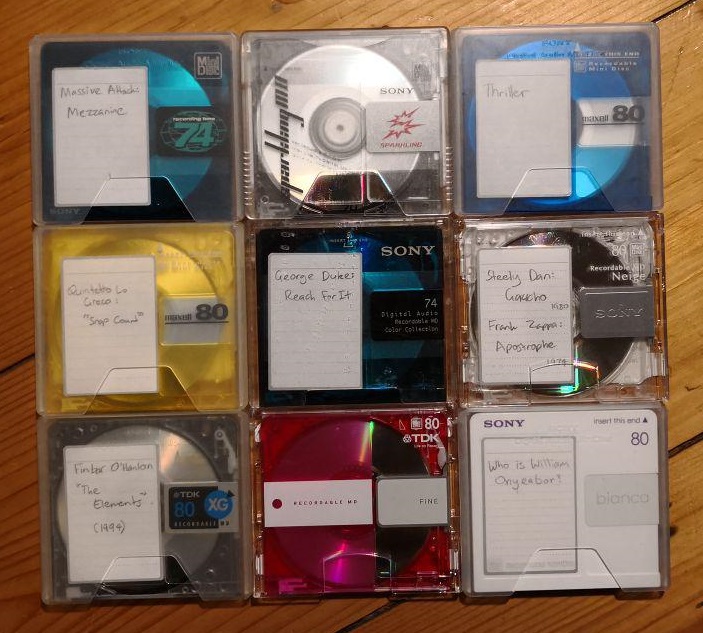
Comments are closed